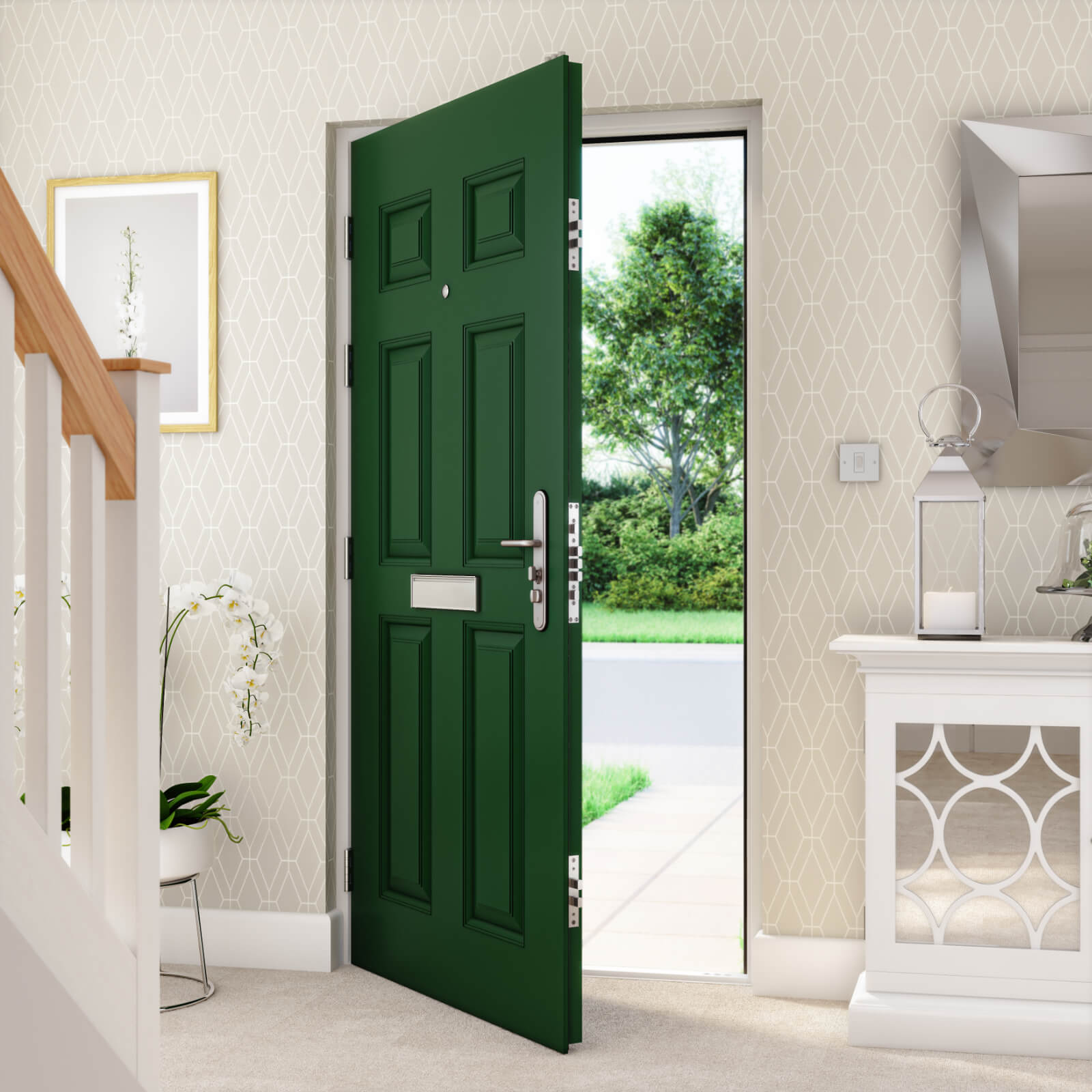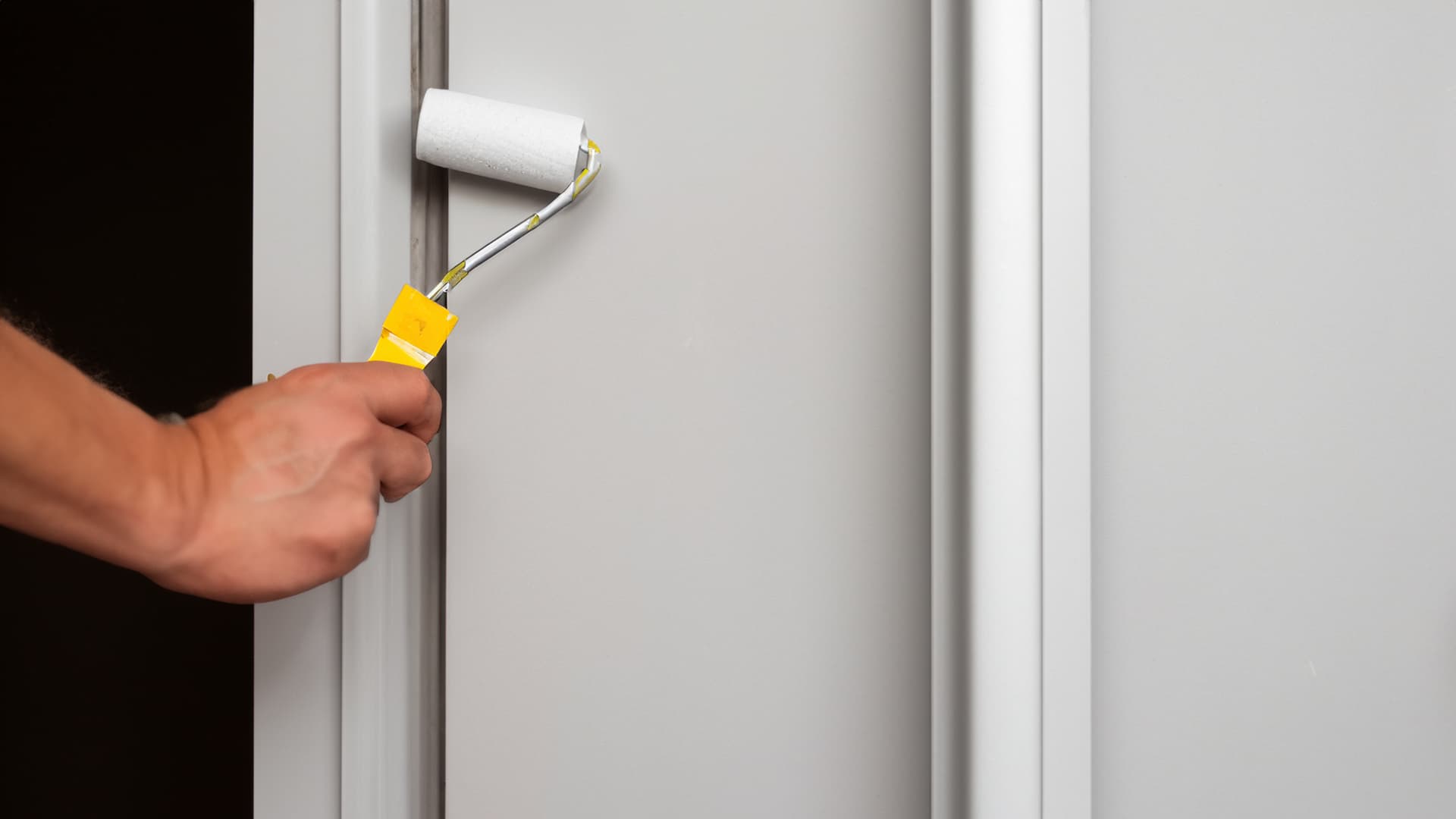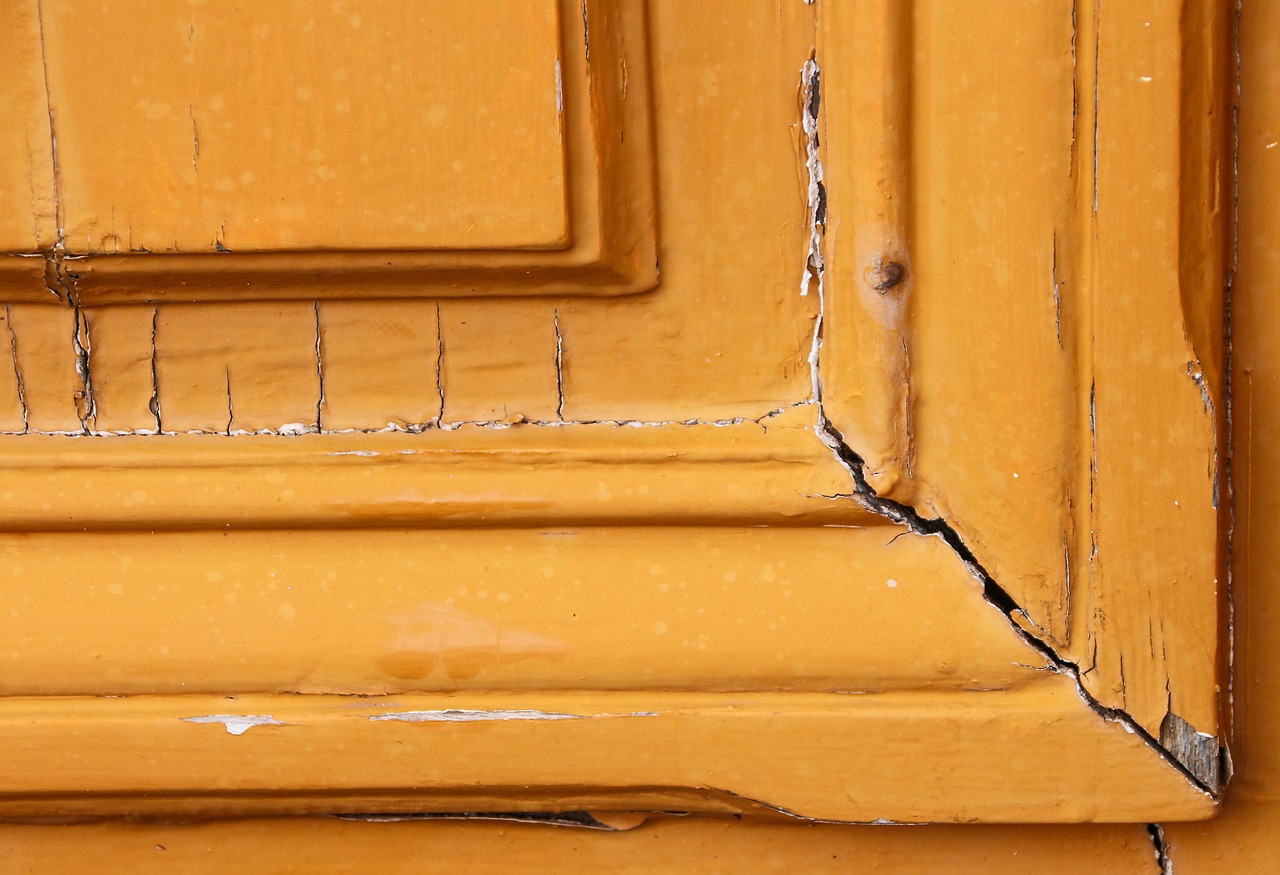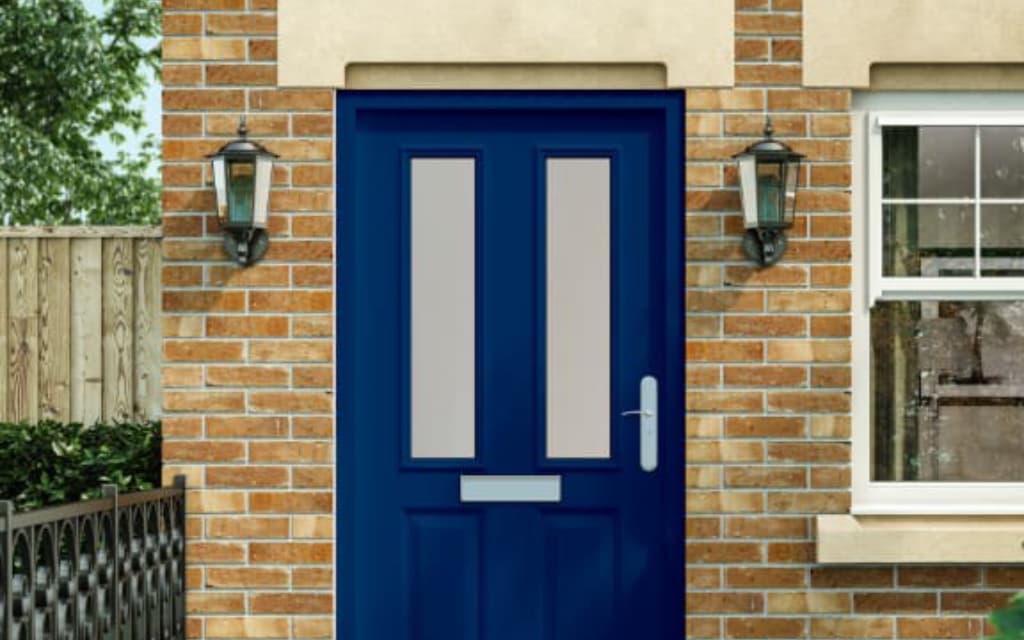Steel doors are strong, provide enhanced security, and have a sleek and contemporary appearance. They also protect your home from wind and rain and are so durable that they can last for decades. Should you wish to update a steel door for aesthetic reasons, or if it is badly damaged, steel doors can be painted. If you feel confident to paint your steel door, you must have the appropriate materials and carry out the job using the correct technique.
This comprehensive guide will help you select the most suitable paint for your steel door, provide a step-by-step approach for a seamless paint application, and outline the issues that may arise.

Why Paint A Steel Door?
If your steel door is in good working order but the paint is peeling and appears rough around the edges, it might be time to repaint it. To keep your steel door looking its best, the solution is to paint it. Painting a steel door can breathe new life into it at a fraction of the cost of a replacement.
Durability
Good quality paint extends the life of your steel front door by creating a lasting barrier against the elements, minimising the potential for wear and tear.
Protection from the elements
Rust is another issue for steel doors due to exposure to moisture. When rust is allowed to form, it leaves steel doors looking tired and shabby. Painting the door will act as a barrier against the elements and prevent rust and corrosion from forming on its surface.
Aesthetic enhancement
Perhaps you are renovating your home and you want to update the colour of your steel front door to match your home’s new decor or architectural style. Painting it in your colour of choice will give an instant boost to your home’s curb appeal.
Protection from wear and tear
Over time your steel door will inevitably receive scratches and dents from usage. These can be easily masked by applying a couple of layers of paint, making it look as good as new.

Can You Paint a Steel Door?
Yes, you can paint a steel door. Should you wish to paint a steel door yourself, using the appropriate paint and necessary tools will lead to a successful DIY job. Repainting your steel door offers several advantages. Not only does it bolster the door’s longevity by serving as a protective shield against environmental factors and routine deterioration, but it also enhances its visual charm. A wide spectrum of colour options avails you the opportunity to opt for a contemporary facade or pay homage to a vintage style.
Preparing to Paint Your Steel Door
Before you begin painting your steel door, there is some preparation to be done to ensure you achieve a professional-looking finish. Follow the preparation steps below for a successful paint job.
Choose the right paint
Water-based acrylic paints (also known as latex paints) and oil-based paints (also called solvent-based paints), will perform well on steel with the proper application technique. Using paint that is resistant to rust and fading and is suited for an exterior door will be most effective. Take a look at this paint product for an example of what you use.
Acrylic Paints
For doors out of direct sunlight, two or more coats of high-quality exterior acrylic-latex paint are ideal for your steel front door. Glossier paint is easier to clean and lasts longer. It’s advisable to use semi-gloss or gloss paint for your front door.
Oil-based paints
Professional decorators often prefer oil-based paints due to their established durability. These paints are particularly recommended for doors that are exposed to direct sunlight, as they resist bubbling and fading when applied with oil-based exterior paint. Nonetheless, oil-based paints demand careful handling. They are potentially more hazardous than their water-based counterparts, pose a challenge in terms of clean-up, and necessitate an extended drying time.
Primer
Should your steel door be unpainted, it’s essential to first coat it with a metal primer before applying paint. Alternatively, you can utilize direct-to-metal (DTM) paint. This type of paint has the unique advantage of adhering to metal surfaces without the prerequisite of a primer.
Use the right tools
Before you begin, check that you have all the necessary tools to paint your steel door.
Painter’s Tape
For a professional finish, use painter’s tape to ensure a smooth finish and clean lines, stopping the paint from seeping through to other surfaces, and covering the door hardware to protect it.
Paintbrushes
If you want to use a paintbrush to paint the door, we would advise a 2 ½” brush. This means it is big enough to speed up the paint job and small enough to be manoeuvrable. For acrylic paints, synthetic bristles are best.
Paint Sprayer
Using a paint sprayer will achieve a truly smooth finish. A paint sprayer makes it easy to apply the paint and reach those hard-to-reach parts of the door easily.
Foam Roller
Using a foam roller as well as a paintbrush will stop the dreaded brushstrokes from appearing. This helps to give a more professional-looking finish.
Plastic Roller Tray
Instead of metal, use a heavy-duty plastic tray. They are rigid but when you clean them, latex paint will not stick and comes off more easily.
Paint Brush Cleaner
To get your brushes completely clean for future use, pour a small amount of solvent-based cleaner or white spirit into a small jar and work the brush against the sides to get the cleaner into the base of the bristles. Soak for about 2 hours, dry with a clean cloth and store in a dry place for future use.
Drop Cloth
This is a protective sheet (cloth or plastic) used by painters to cover floors and furniture. Use these to cover and protect the surrounding area when painting.
Sandpaper
The steel door should be sanded down in preparation. Lightly sand the door using 220-grit sandpaper.
Door Wedge
To prevent the door from moving when you’re painting it, invest in a door wedge. That way it stays firmly in place while you paint away.
Stay Safe
It’s important to stay safe when executing any DIY job at home. A paint job is no different. Before you begin, ensure you are protected with PPE, such as gloves, goggles, and masks. This will stop you from inhaling toxic paint fumes and will protect your hands and eyes from the paint. Always ensure the room you are painting in is well-ventilated. If the door is internal, open doors and windows throughout the home so the paint fumes can be exhumed efficiently.
Prep the surrounding area
You need to ensure your work area is properly prepared. This means moving furniture away from where you plan to paint the door and laying down the drop cloth to protect carpets, floorboards, and furnishings.
Prepare the door
After removing the door from its hinges, place it on two sawhorses or a large, flat surface. Strip away any removable weatherstripping and cover any hinges or hardware with painter’s tape. Cover windows and kickplates that cannot be removed with newspaper to protect them. The door should then be cleaned with a mild detergent or degreaser and dried thoroughly.
Sand the door
With a dust mask and protective eyewear, lightly sand the door with sandpaper to roughen the surface and remove any loose paint.
Apply a primer
If the door has a smooth surface, apply the primer with a short-nap roller and allow it to dry. If the door has recessed panels, begin by priming the inside panels with a small brush, then roll primer onto the mullion which is the vertical part between the panels, and rails which are the horizontal parts between the panels, and the outside edges. Ensure the primer is completely dry before beginning to paint.

Step-by-step Guide to Painting a Steel Door
Step 1: Apply the first coat of paint
Apply the first coat of paint, working from the top down using a foam roller or paint sprayer.
Step 2: Paint with even broad strokes
Apply the paint in even, broad strokes across the surface of the door. If you can, try and avoid going back over surfaces already painted – this will help you create an even finish.
Step 3: Allow enough time for the paint to dry
If you are painting the door on its hinges, begin painting early in the day. The paint should have a chance to dry before you lock the door for the evening. Adhere to the manufacturer’s guidelines concerning the drying durations of the paint, which typically span 24 hours. This is vital since drying times can vary considerably across different paint types.
Step 4: Apply the second coat early in the day
For the second coat to be dry by nighttime, begin applying it the following morning. Continue in this manner until all the necessary coats have been applied.
Step 5: How to apply the second coat of paint
For the most part, applying your second coat is much like applying your first coat. The tricky part is keeping track of where you have – and haven’t – painted. We suggest beginning in the top corner and cutting along the corners and trim. From there, roll the paint on in small sections.
Step 6: Reattach the door
If you took the door off its hinges to paint it, after the paint has completely dried, gently remove the painter’s tape and reattach any removed hardware or weatherstripping. You can then rehang the door and begin using it.
Please note:
Adhere to the manufacturer’s guidelines concerning the drying durations of the paint, which typically span 24 hours. This is vital since drying times can vary considerably across different paint types.
Post-Painting Care and Maintenance
Clean the door regularly
Firstly, maintain a steel door by regularly cleaning it. You can do this by using mild soap and water and washing the surface with a soft cloth. Rinse with clear water and dry with a soft cloth.
Repaint and touch-ups
A well-prepared and painted door should easily last 3 – 5 years, but will probably need a touch-up to keep it looking good. If you have any spots that need touching up use fine sandpaper to smooth the area. Use a brush to add an undercoat and topcoat. Remember to let the paint dry between coats.
Painting a steel door shouldn’t need to be done for 8 – 10 years.

Image from pixabay.com
Common Problems and Solutions When Painting Steel Doors
Most problems with painting a metal door are preventable. Issues that arise stem from not using a primer and using the correct painting technique. Following a step-by-step guide and taking time to prepare is key to a successfully painted steel door.
Here are our solutions to problems that may arise.
Choose a sustainable colour
A factor that will affect the life of the paint is the colour you choose. The colour you choose will affect how long the paint lasts, with dark colours fading sooner than lighter shades. Although the front door is a great place for a dramatic statement, a dark or red colour will need repainting much sooner.
Sun exposure
Steel doors can become quite hot when exposed to direct sunlight. Lighter colours with a hint of brown will last longer when exposed to direct sunlight.
Use a suitable paint
100% acrylic paints will outperform traditional oil-based paints when used on a steel door. Top-quality exterior acrylic house paint will be more resistant to the effects of sunlight.
Prevent paint bubbles
Moisture will cause the paint to peel and the steel to become rusty. To prevent this, seal the kick plate with a small bead of caulk before installation. This will act as a gasket and keep moisture from collecting behind the kick plate.
Prevent streaks and brush strokes
Using a foam roller or paint sprayer will help to prevent streaks or brush strokes, which leave a door looking amateurish and shabby. Both of these tools will provide a smooth and professional finish. Applying multiple layers of paint will also protect the door from wear and tear. Using a paintbrush can be problematic due to the risk of brush marks on the smooth surface. Painting steel doors with a brush is best suited for doors with raised panels; flat doors should be sprayed or rolled.
Choose an application method that best suits your abilities and needs.
Prevent peeling
A good primer should be applied before painting to ensure the longevity of the paintwork and to prevent the paint from peeling over time.
Preparation is key
Before you pick up a paintbrush, the beauty and longevity of your steel door are dependent on the preparation. Most of the work involved when painting steel doors is with preparation. This is true even for a new, unpainted, steel door. Thoroughly cleaning the door without harsh chemicals but with mild detergent and sanding before painting are two of the most important parts of the preparation. This leads to a smoother finish as all pieces of dust, dirt, and loose paint are diminished.
Conclusion
In conclusion, yes you can paint a steel door but preparation is key to a successful paint job. Following the various steps of preparation, such as cleaning, sanding, and priming the door, will achieve a professional finish when painting your steel door. There are also aspects of painting a steel door that you must consider, such as choosing the right tools to paint to avoid a streaky finish.
To ensure the longevity of your paintwork, it’s important to avoid common issues with painting a steel door, such as rust developing and paint peeling. There are solutions to the problems, and they can be avoided by maintaining your steel door and giving it the TLC it deserves.


